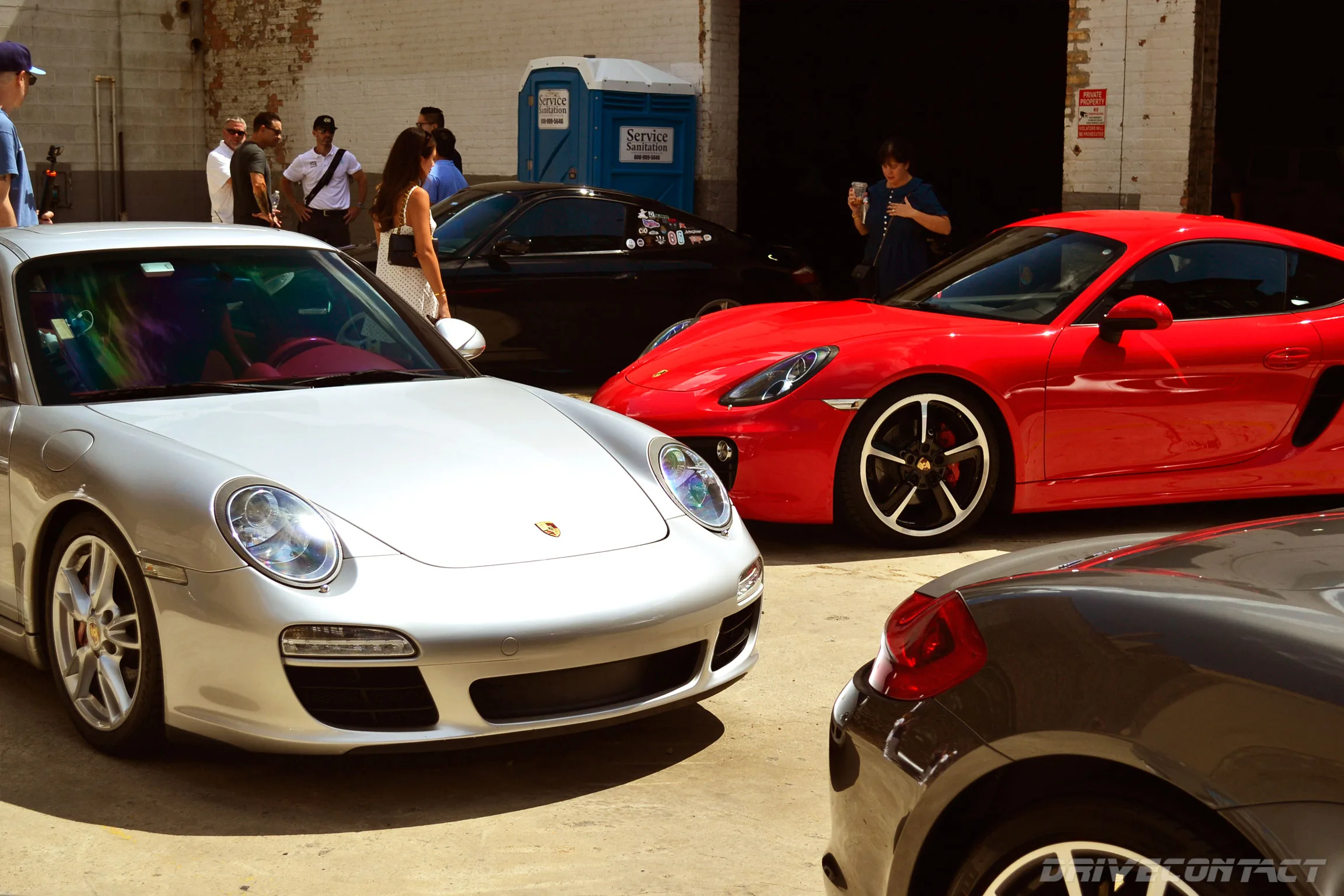The turn of the 1970s signaled Dodge’s fiercest entry into the American muscle arena. With the arrival of the 1970 Dodge Challenger R/T, Chrysler didn’t simply release another performance coupe—it fired a bold challenge at the established legends, Ford’s Mustang and Chevrolet’s Camaro. Though it joined the pony car rivalry later than its competitors, the Challenger’s dramatic styling, raw strength, and unmistakable swagger instantly cemented its status as one of the most iconic and aggressively styled machines of its generation.
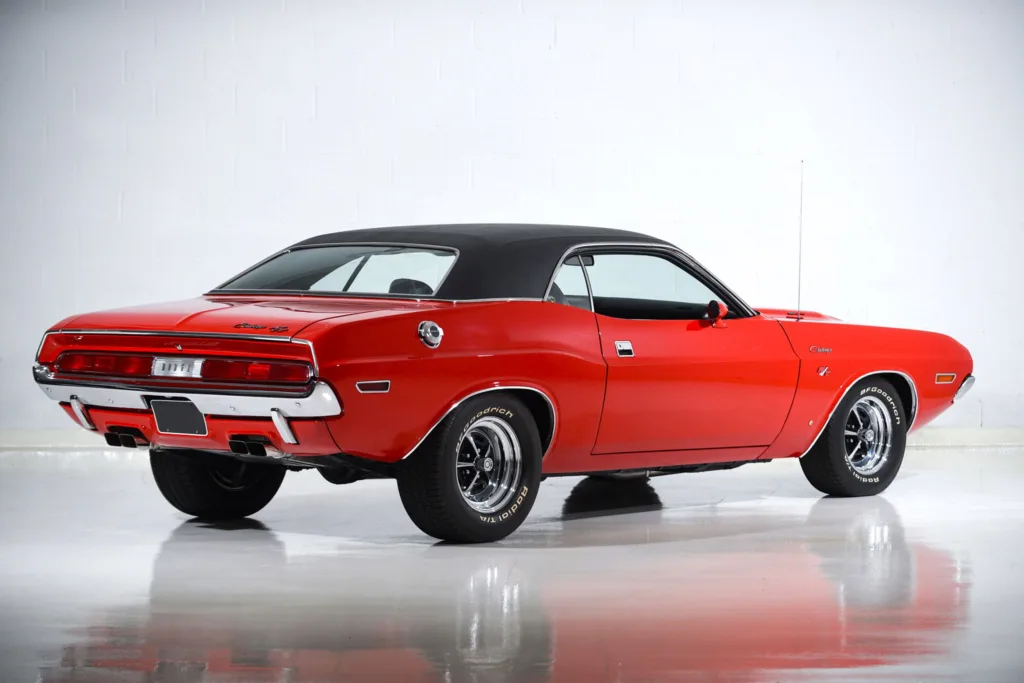
Building an American Contender
By the closing years of the 1960s, America’s streets had become battlegrounds of horsepower. The nation’s automakers were locked in a high-octane rivalry—Ford’s Mustang had sparked a revolution, Chevrolet and Pontiac joined the fray with the Camaro and Firebird, and Plymouth stoked the flames with its Barracuda. Yet one major player, Dodge, remained conspicuously absent from this escalating “pony car” war. That changed dramatically in 1970, when Dodge roared onto the scene with the Challenger R/T (Road/Track)—a machine built to deliver not just muscle, but presence. It was Dodge’s declaration that the brand could compete head-on with Detroit’s best, and do so on its own bold, aggressive terms.
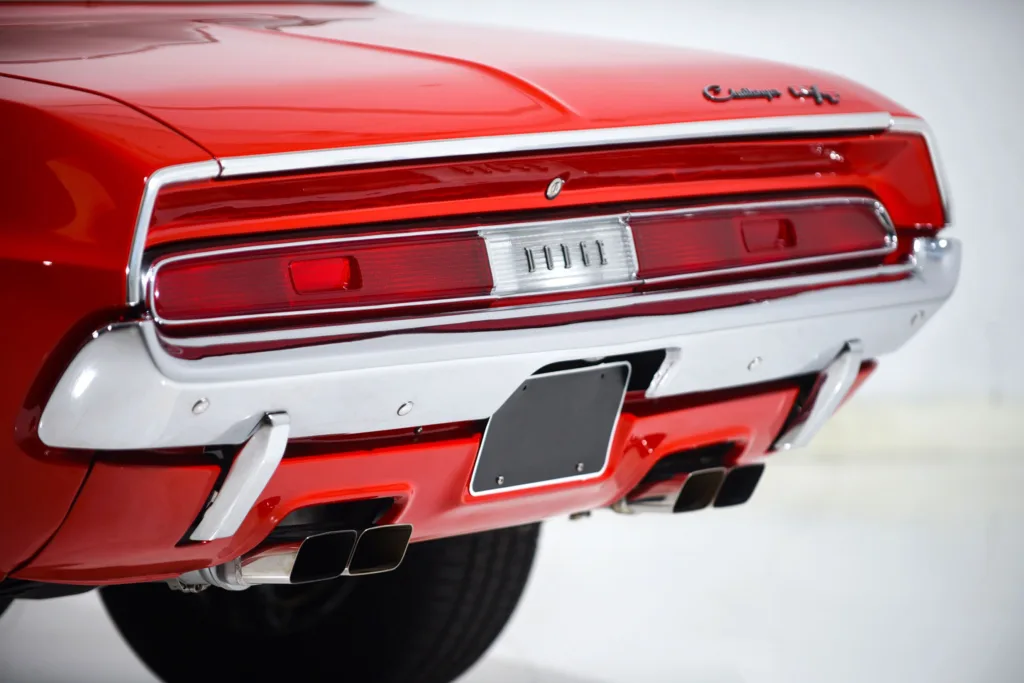
The Challenger’s foundation rested on Chrysler’s newly developed E-body platform, created to combine big-block performance with everyday usability. Shared with the Plymouth Barracuda but stretched in wheelbase and width, it provided the Challenger with extra cabin room and a more refined road demeanor. Dodge aimed the car at buyers who wanted commanding power wrapped in comfort and sophistication. This philosophy set it apart from the smaller, more Spartan entries in the segment. The 1970 Challenger didn’t settle for being a simple muscle car—it was a grand-touring brawler, equally at home burning rubber at the drag strip or cruising effortlessly down the interstate, offering drivers a perfect crossroads of brute strength and style-driven luxury.

Styling: Classic Dodge Muscle Redefined
Where competitors went sleek, the Challenger went bold. Design work was led by Carl Cameron, famous for shaping the 1966 Dodge Charger. For the Challenger, he crafted a long-hood, short-deck coupe with muscular fenders and a deep rectangular grille that projected controlled menace. The split headlights and recessed taillights emphasized width and aggression, while subtle curves along the body sides gave it the distinctive “Coke bottle” silhouette cherished by American car designers of the era.
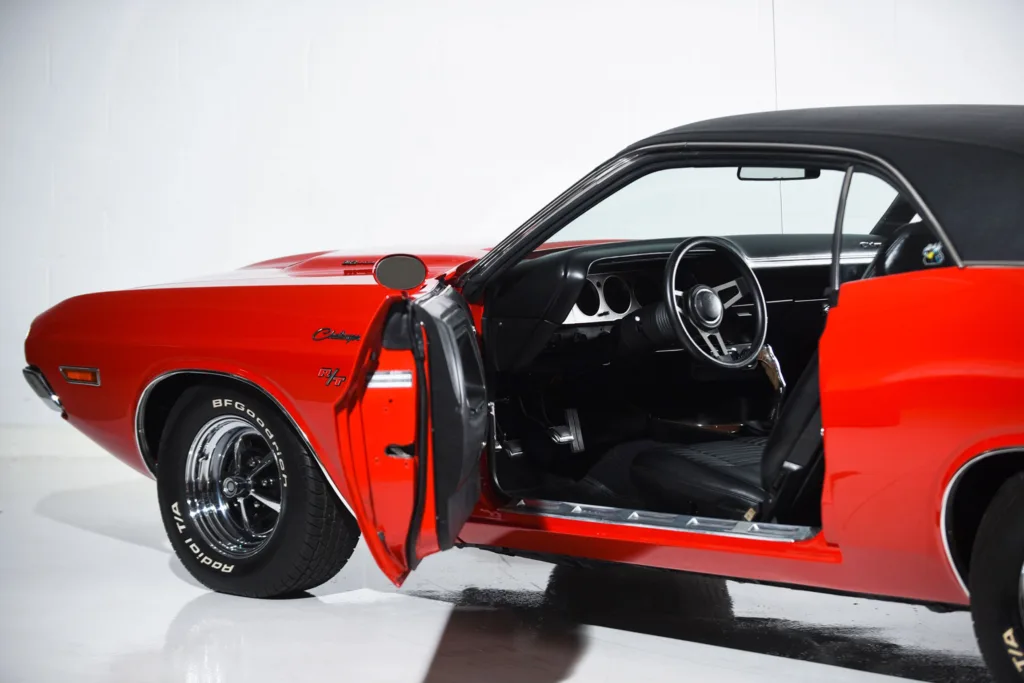
Buyers could choose between a hardtop coupe or a convertible, both offered with model-specific striping and wheel designs. The Challenger’s proportions looked deliberately exaggerated—visually heavier, more planted, and more intimidating than its Plymouth twin. Dodge’s marketing at the time called it “a car for the man who’s gotten where he’s going,” pitching the Challenger not just as fast, but as a badge of success and personality.
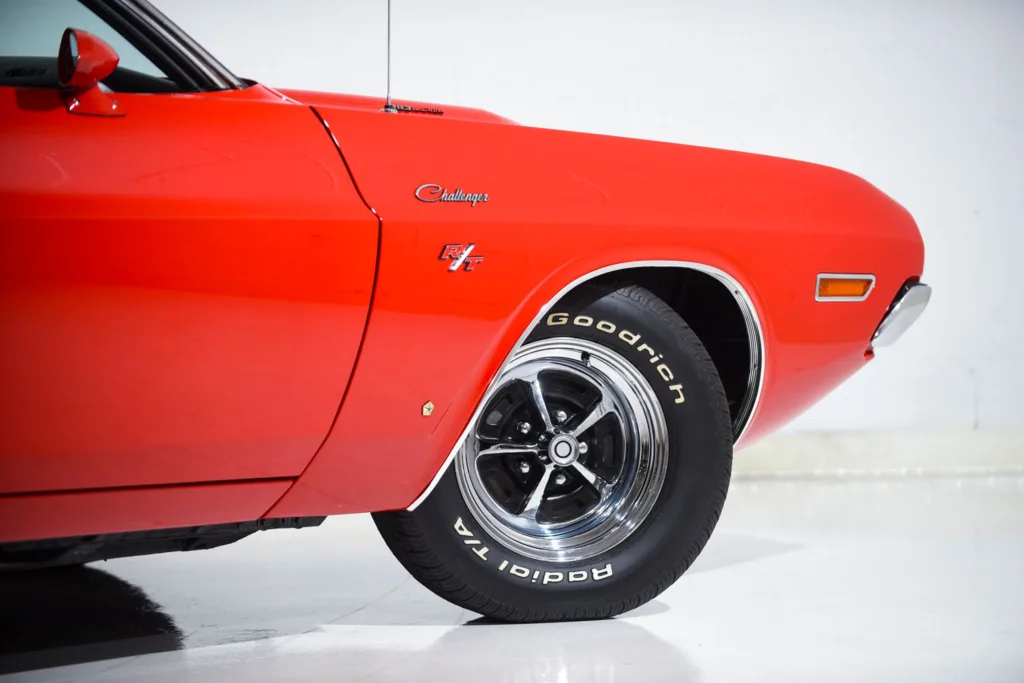
Under the Hood: The R/T Powerhouse Lineup
The “R/T” designation stood for Road/Track, and Dodge engineered it to represent the pinnacle of Challenger performance. The base Challenger R/T came equipped with a potent 383-cubic-inch V8 rated at 335 horsepower. But the real legends came from its range of optional engines:
- 440 Magnum V8 (375 hp) – offering massive torque with everyday reliability.
- 440 Six-Pack (390 hp) – equipped with triple two-barrel carburetors, this option became famous for its instant throttle response and race-ready tone.
- 426 Hemi V8 (425 hp) – the crown jewel, hand-built for dominance. With its hemispherical combustion chambers and nearly 500 lb-ft of torque, this engine transformed the Challenger into a quarter-mile monster.
Buyers could choose between a four-speed manual gearbox fitted with a Hurst pistol-grip shifter for full driver engagement or a Torqueflite automatic transmission for effortless cruising.

Beneath its aggressive stance, the Challenger R/T featured a robust rear-wheel-drive system, heavy-duty suspension components, and reinforced shock absorbers tuned for precision handling. Together, these elements gave the car impressive traction and composure, allowing it to harness its immense V8 power while maintaining poise even under hard acceleration.
Performance figures spoke louder than words. A 426 Hemi Challenger R/T could accelerate from 0 to 60 mph in just over 5.5 seconds, running the quarter-mile in the low 13s—astonishing numbers for a street-legal machine in 1970.
Track Pedigree: The Trans Am Homologation T/A
In its pursuit of road-racing credibility, Dodge unveiled the Challenger T/A (Trans-Am)—a rare, competition-inspired homologation special built to meet SCCA Trans-Am requirements. Under its hood sat a 340-cubic-inch V8 breathing through triple two-barrel carburetors, officially rated at 290 horsepower, though real-world figures were notably higher. Beyond raw power, the T/A distinguished itself through a host of engineering upgrades: lightweight fiberglass components, a race-style side-exit exhaust, revised suspension geometry, and grippy Goodyear Polyglas tires that sharpened its handling.
The result was one of the most finely balanced and responsive muscle cars ever to wear the Dodge badge—a street machine born directly from the race track.
Despite its competitive engineering, the T/A’s racing program lasted only one season, but its influence remains immense. It symbolized Dodge’s commitment to performance both on and off the track.
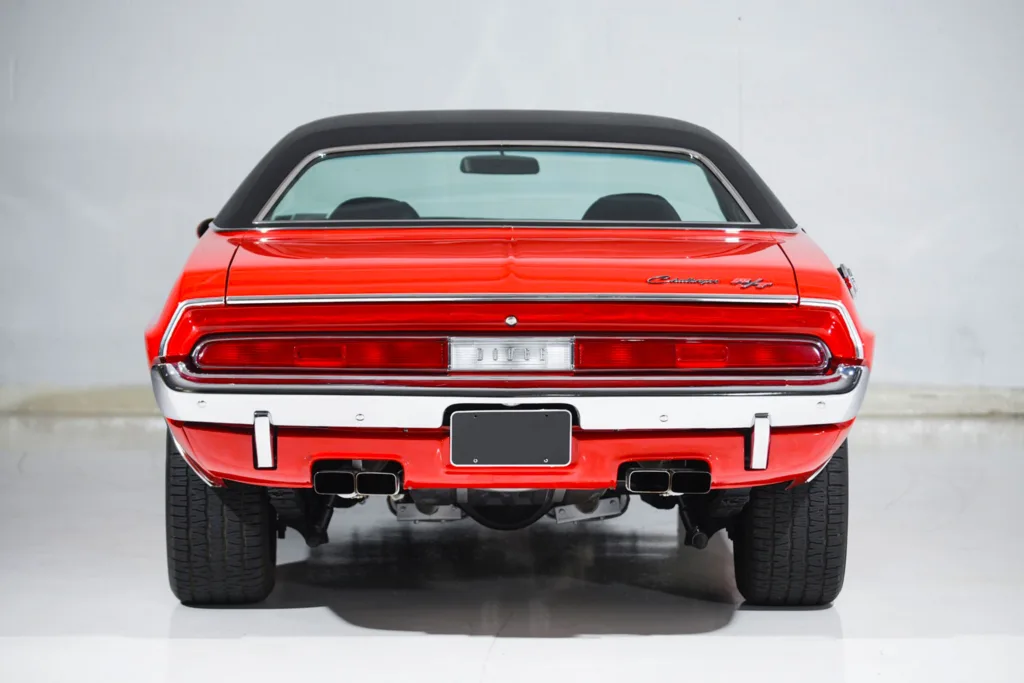
Interior Design and Personalization
Inside, the 1970 Challenger R/T felt more refined than most of its rivals. The cabin offered a driver-centric dashboard, complete with rallye instrumentation, deep bucket seats, and optional woodgrain trim. A range of vivid High Impact paint colors—from “Plum Crazy Purple” to “Sublime Green” and “Panther Pink”—allowed buyers to express individuality. Many R/Ts also wore distinctive dual longitudinal stripes or side graphics, further emphasizing their racing spirit.
The Challenger wasn’t simply another performance car; it was an expression of the freedom, individuality, and excess that defined early 1970s American car culture.
Market Reality and Enduring Legacy
Although it launched at the height of muscle car fever, the first-generation Challenger’s success was cut short by the very forces that ended the muscle era itself—rising insurance rates, tighter emission laws, and the 1973 oil crisis. Dodge sold approximately 76,935 Challengers in 1970, including only about 19,000 R/T models. After just four years, the line was discontinued.

Yet time has only amplified its legend. Today, the 1970 Dodge Challenger R/T is considered one of the most collectible Mopar cars ever produced. Genuine Hemi-equipped or Six-Pack versions command six-figure prices at major auctions. More importantly, the car’s design DNA laid the foundation for Dodge’s modern resurrection of the Challenger in 2008—proof that 1970’s blueprint for raw power and timeless styling still resonates across generations.

The R/T remains the symbol of Dodge’s fearless approach to performance—a machine that blended brute strength with rebellious artistry. It captured the soul of an era when the roar of a big-block V8 wasn’t just a sound; it was a declaration of identity.



